The Best Running or Walking Shoes for Plantar Fasciitis
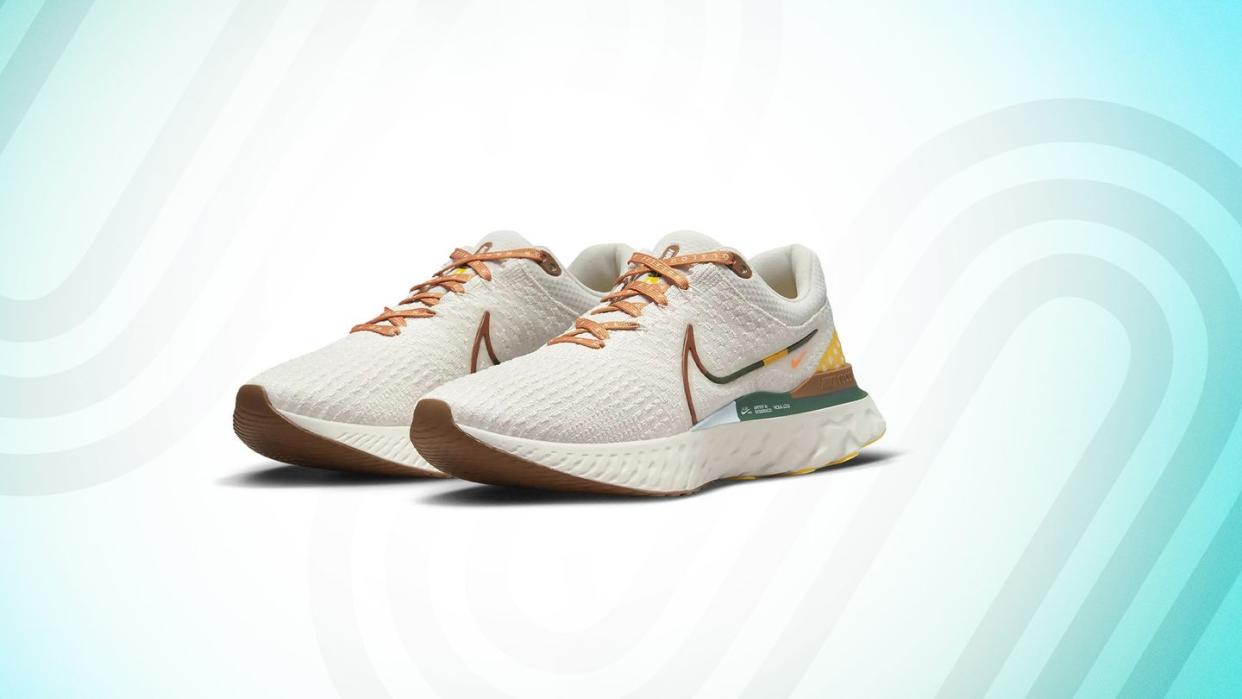
"Hearst Magazines and Yahoo may earn commission or revenue on some items through these links."
If you’re experiencing ongoing aches or sharp stabbing sensations at the back of your foot, there’s a good chance you have plantar fasciitis, one of the most common causes of heel pain. It’s an affliction shared by many runners—and it can have long-lasting impacts on your training and everyday life. The right shoes can make a huge difference in alleviating the pain. And while the best shoe for you depends largely on your running form, foot type, and gait cycle, we’ve found that some shoes provide the kind of structure and support to better manage your plantar fasciitis pain. Read on for more about the condition, and our recommendations for plantar fasciitis shoes for both running and walking.
Best Shoes for Plantar Fasciitis
The Expert: To help guide my selection of the best shoes for plantar fasciitis pain, I relied on the expertise of podiatrist and runner Mark Mendeszoon, DPM, a spokesperson for the American Podiatric Medical Association. Not only has Dr. Mendeszoon worked with Olympic runners in his capacity as a physician, but he’s also a runner himself—and has personally dealt with the lasting effects of plantar fasciitis. While Mendeszoon didn’t select any of the shoes listed below, he provided a framework to help me recommend models that have proven successful in alleviating some runners’ pain.
What to Consider
Comfort and Fit
There are a number of factors to consider when shopping for a good shoe to alleviate plantar fasciitis pain, and most will vary by individual. But choosing a well-fitting shoe is essential, no matter what brand or model you purchase. Mendeszoon recommends getting a professional fit at a running store—while both sitting and standing—at least once a year.
“Feet change sizes in length and width and flatten out as we get older,” he says. “Make sure your shoe has enough room so that your toes can move without pressure or tightness. The length of the shoe should be a thumbnail’s distance from the longest toe. Also, make sure that your foot is measured by width. Feet come in different sizes and shapes, and it’s important that the width of your feet is measured so that the shoe has adequate space.”
More to Check Out: Best Running Shoes with Arch Support • Most Comfortable Running Shoes • Best Cushioned Running Shoes • Best Running Shoes for Flat Feet
Arch Support and Cushioning
Above all, you need a shoe with high-quality, targeted cushioning—whether you choose a running or non-running model. If you can’t find enough cushion in your shoe of choice, you can also consider orthotics. But Mendeszoon recommends wearing shoes designed for running for the comfort needed to work through plantar fascia pain. “If you have to wear a non-running shoe, choose one with good cushion, good midfoot support, and a supportive arch,” he says. “Try to avoid non-running shoes that are slip-ons. Flip-flops, Crocs, and non-supportive sandals will just aggravate plantar fasciitis.”
Shoe Type: Neutral or Stability?
Running shoes don’t tend to be one-style-fits-all, so you’ll want to seek out a shoe that works well for your foot type and gait cycle. “There are no particular shoes that will correct everybody's foot problem,” Mendeszoon says. “However, I do recommend that my patients seek out the proper category shoe. If someone has a high-arched foot, then they would be placed into a neutral shoe. If someone is flat-footed, they should probably seek out shoes that provide stability or motion control.”
If you wear orthotics, Mendeszoon recommends you bring them to the running store, as well, so they can be fitted into the shoes.
How We Selected
To select these shoes, I used input from Mendeszoon about what kind of shoes are best for alleviating plantar fasciitis pain. I also relied on the insight of Runner’s World’s Runner-in-Chief Jeff Dengate, one of the leading experts in the running shoe world. According to Mendeszoon and Dengate, two of the most important features to look for are good cushioning throughout and midfoot or arch support. The following are all shoes that Dengate has found to provide the comfort runners need while working through plantar fasciitis.
React Infinity 3 Running Shoes for Plantar Fasciitis
Nike uses the React foam in this shoe’s midsole in its basketball shoes, as well—with good reason. That thick slab of energetic foam can handle some serious pounding, and dampens the force of your foot against the pavement with every stride. The effect is that your soles feel more protected with each bouncy and well-cushioned impact.
Those with plantar fasciitis will find the shoe feels supportive and comfortable, with enough cushioning and arch support throughout to help prevent further exacerbating injury.
The price of all that cushion is that the shoe is a little heavier than more race-oriented trainers, but this also gives the shoe a durable, grounded feeling that won’t quit on you after a couple hundred miles.
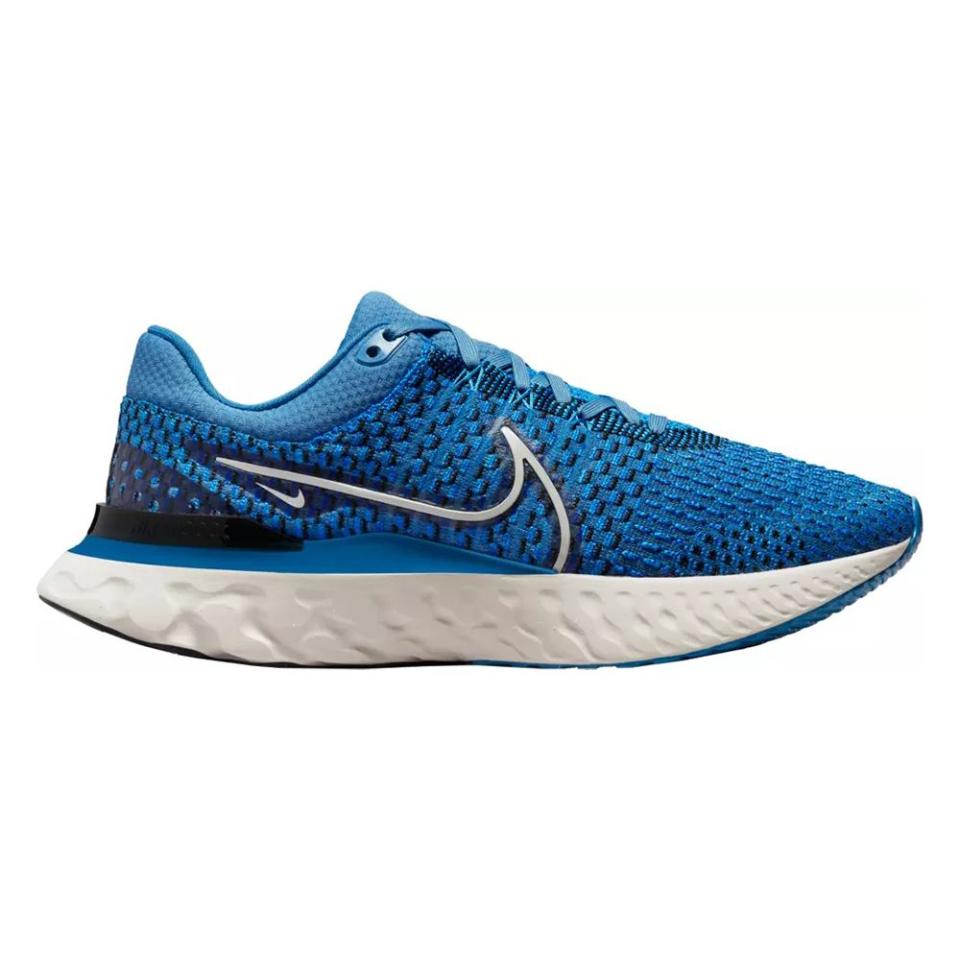
React Infinity 3 Running Shoes for Plantar Fasciitis
dickssportinggoods.com
$103.99
Wave Rider 25 Plantar Fasciitis Sneaker
The 25th iteration of this soft, cushy favorite has a full-length foam midsole that feels both thicker and more flexible than previous versions of the shoe, especially in the forefoot. It also has Mizuno’s trademark “wave plate”—a midsole insert designed to absorb the forces of impact and give you a less jarring or injury-inducing ride.
Running and walking in the Wave Rider feels smooth and springy, thanks to all the soft support underfoot. The 25’s durable carbon rubber outsole also gets good traction on crushed granite trails, and all but guarantees a long life span.
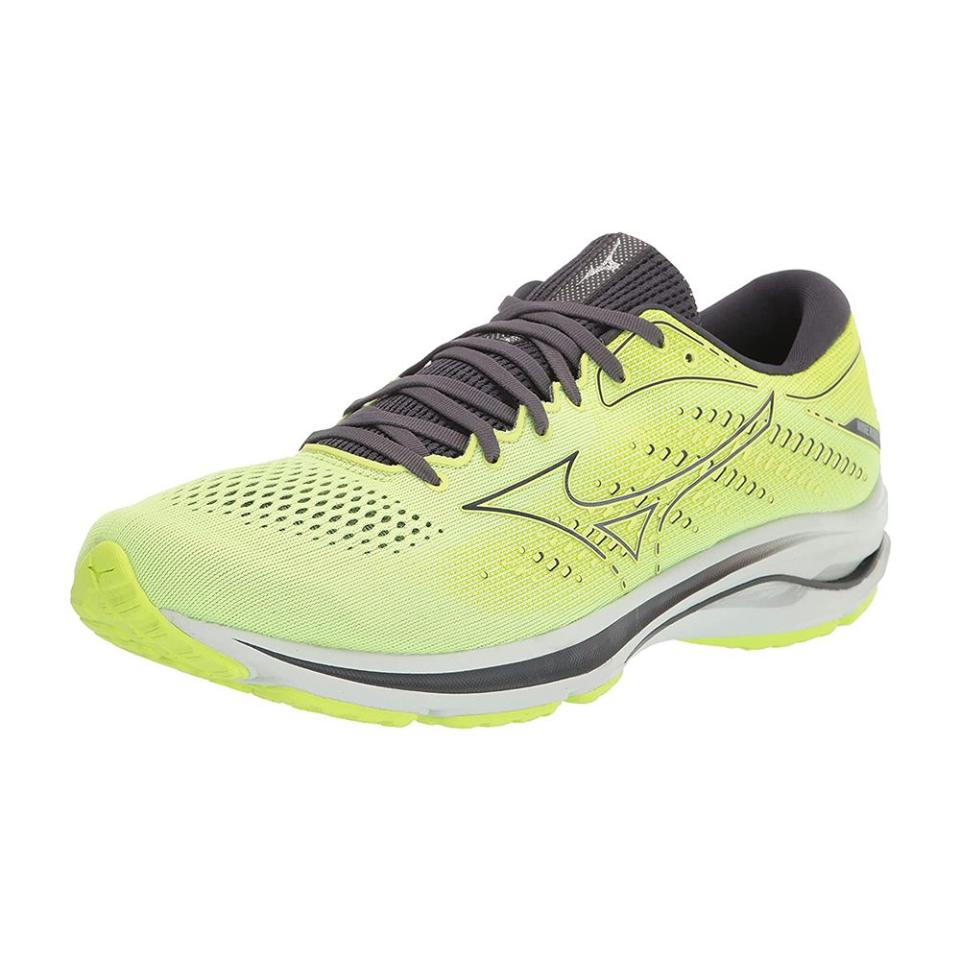
Wave Rider 25 Plantar Fasciitis Sneaker
amazon.com
$96.24
Guide 15 Plantar Fasciitis Running Shoe
Much like the Arahi, the Guide 15 packs more foam than ever into an even lighter package. The daily trainer uses a thick EVA-based Pwrrun midsole that’s soft, light, and flexible in the forefoot, while providing plenty of cushion for your foot overall.
This latest iteration of the Guide has a redesigned footbed that positions your foot lower in the shoe and helps bolster your soles for a more snug, supported feel.

Guide 15 Plantar Fasciitis Running Shoe
amazon.com
$84.95
Gel-Kayano 28 Plantar Fasciitis Shoes
The Kayano is one of Asics’ most popular shoes for both walking and running, due to its overall high-quality feel and abundance of cushion.
The shoe has stability features for overpronators, like an angled inset designed to smooth out your stride. But it also works well for neutral runners, with lots of responsive FlyteFoam Blast cushioning through the midsole—particularly at the midfoot, which helps better support your plantar fascia. Gel pods under the heel and forefoot give the foot even more padding and impact absorption.
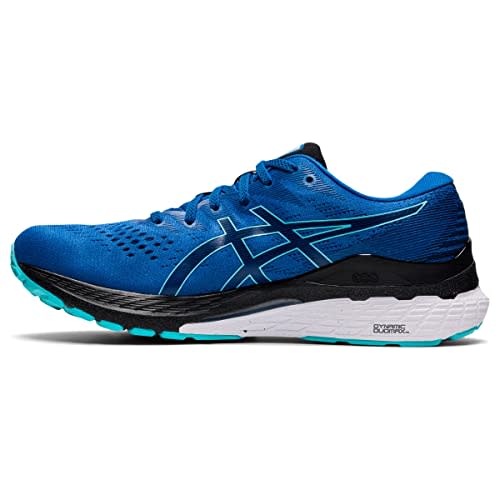
Gel-Kayano 28 Plantar Fasciitis Shoes
amazon.com
$94.96
Fresh Foam X 860 V12 Plantar Fasciitis Sneaker
Another popular stability trainer, the 860 v12 is a cushy shoe that works well for moderate overpronators and those suffering from foot pain. The Fresh Foam midsole feels thick and bouncy without adding heft, and gives your foot plenty of protection from the impact of the pavement.
Classic stability features like a medial post on the inside of the foot curb any excess rolling or overpronation. The breathable mesh upper has a double knit construction to better hold your foot into place as you walk or run.

Fresh Foam X 860 V12 Plantar Fasciitis Sneaker
amazon.com
$73.65
Adrenaline GTS 22 Lace-Up Plantar Fasciitis Running Shoe
The Adrenaline is a smooth-riding shoe that works for a lot of walkers and runners due to its light stability features and generous cushion.
For overpronators, “guide rails” in the shoe’s midsole will help steer your foot into proper alignment with every step—while those with a more neutral stride are unlikely to even notice the feature. That genius, crowd-pleasing midsole design also includes a lot of support baked in, particularly at the midfoot where you need it most.
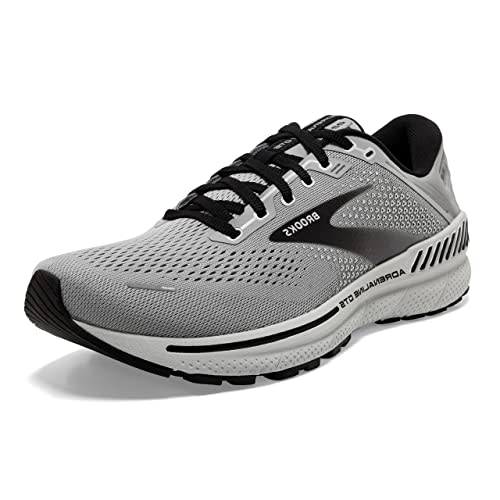
Adrenaline GTS 22 Lace-Up Plantar Fasciitis Running Shoe
amazon.com
$119.95
Arahi 6 Lightweight Plantar Fasciitis Sneaker
If you’re looking for a shoe with plenty of underfoot support at a noticeably low weight, try the Arahi. The shoe packs plenty of stability features into its mattress-like midsole, like bouncy but firm targeted cushioning and Hoka’s “J-Frame,” which is designed to combat excess rolling of the foot.
Hoka also streamlined the mesh upper to shave weight without sacrificing comfort or cushion, and added the brand’s “Meta-Rocker” sole, which gives it a smoother-feeling ride as it rolls you through your stride like a rocking chair. Runners with wider feet will appreciate the roomy toe box.
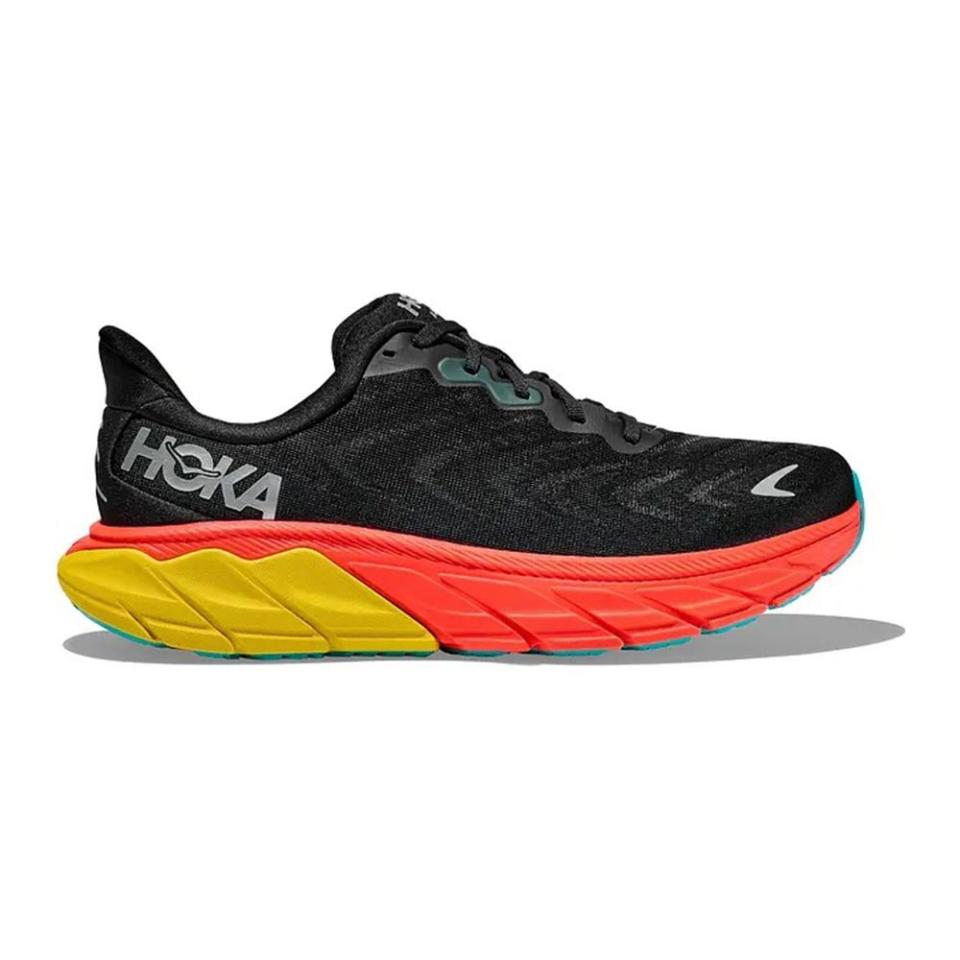
Arahi 6 Lightweight Plantar Fasciitis Sneaker
fleetfeet.com
$140.00
What causes plantar fasciitis, and is there a cure? And can the wrong shoes make things Worse? Expert Caitlin Giddings talks with runner and podiatrist Dr. Mark Mendeszoon to learn more.
RW: What causes plantar fasciitis and why is it such a problem for runners?
CG: Plantar fasciitis involves inflammation of the plantar fascia—a thick band of non-elastic tissue that runs across the bottom of the foot and connects the heel bone to the toes, Mendeszoon says. “The impact of running places incredible stress on the foot; during heel strike, up to eight times a person’s body weight is absorbed by the foot.” Because the plantar fascia isn’t very forgiving and doesn’t stretch, those repetitive forces cause microtears at the heel bone connection point.
“To run one mile, the average person will take approximately 1,500 steps,” Mendeszoon says. “So the best analogy for the repetitive forces that cause plantar fasciitis is as if you were picking at a scab which continues to cause small bleeding and thus more scab or (scar tissue)—which is even more inelastic than the original tissue.”
RW: Can the wrong shoes exacerbate plantar fasciitis?
CG: “Shoes have a tremendous impact,” Mendeszoon says. But there’s also no one-size-fits-all answer to which shoes you should avoid.
“Like fingerprints, everyone has a unique running form and gait cycle, or the way the body moves from one step to the next,” he says. “It’s important for runners to be evaluated by a professional that works at a local running shop so they can be assessed and fitted into the right running shoe for their body type, foot type, running activities, and goals.”
RW: What’s the best way to treat plantar fasciitis?
CG: The unsatisfying answer is that there’s no simple cure to treat plantar fasciitis, according to Mendeszoon. But there are ways to alleviate the pain and help your foot heal.
“The best treatment is to initially start with proper running shoes or walking shoes to provide support and cushioning for your foot,” he says. “Avoid going barefoot as much as possible. Start working on flexibility exercises and stretching of the Achilles tendon. The majority of people who have plantar fasciitis typically have a tight Achilles tendon, so it’s paramount that they stretch the Achilles multiple times a day, daily.”
You’ll also have to avoid running and other high-impact activities. And get ready for ice to play a big part. “Ice the bottom of the foot twice a day for 15 to 20 minutes, do ice baths twice a day for 10 to 15 minutes—or take Dixie cups filled with water, freeze them, and use them to ice-massage your heel for 10 to 15 minutes several times a day,” he says.
You can also take an anti-inflammatory like ibuprofen two to three times a day, if you’re healthy, but don’t stay on it long-term. And if the condition doesn’t improve, see a doctor that specializes in sports medicine and foot care.
“Typically, physicians will treat plantar fasciitis with the above methods, but also add physical therapy, medication, night splint, walking boot, even possibly injections,” Mendeszoon says. “Very few people with plantar fasciitis actually need surgical intervention, but that decision will be based on the physician’s input.”

You Might Also Like

